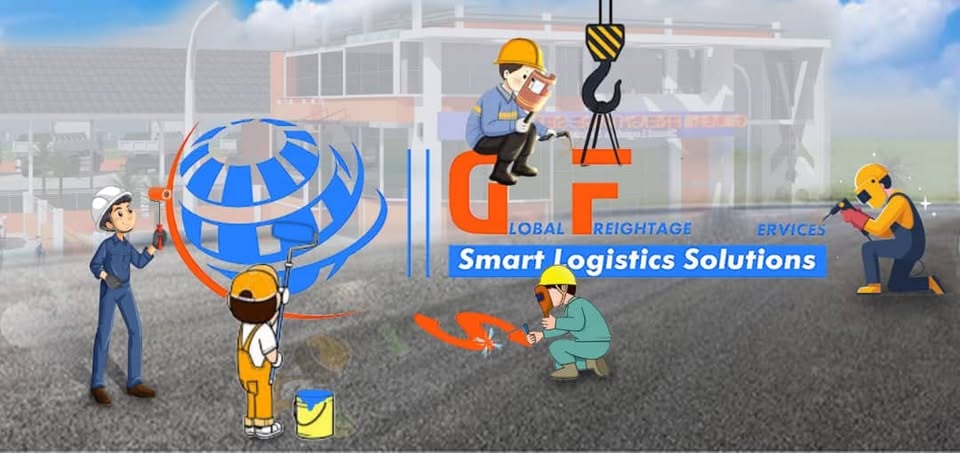Reflections on Aid Logistics: Observing a Tipper Truck in Central African Republic.
Questions and Insights from a Road Survey for Effective Relief Cargo Movement.
As our convoy trundled along the winding, unpaved arteries of the Central African Republic’s interior, the landscape alternated between dense forest, grassland, and scattered villages. Road surveys such as these are the lifeblood of every logistical operation, especially in a nation where terrain and infrastructure can be as unpredictable as the weather itself.
Our mission: to identify the most suitable routes for transporting vital aid and relief cargo to communities in need.
On this day—4th July 2024, as the midday sun pressed down and the dust kicked up by our tyres settled over everything in a fine ochre mist, I spotted something that arrested my attention—a tipper truck, of the type usually employed for hauling sand or gravel, rumbling along the roadside with a large container perched in its bed.
At first glance, it seemed an unlikely marriage of machine and cargo. As the truck passed, my mind began to turn over a series of questions shaped by both curiosity and professional concern. How had the container been loaded onto the tipper truck? How would it be offloaded at its destination? Why was the container not lashed down, as safety protocols would seem to demand? These initial queries soon unfolded into a broader contemplation of the improvisations, challenges, and risks inherent in humanitarian logistics in such contexts.
The Art of Improvisation in Humanitarian Logistics.
In Regions where standard infrastructure is lacking or unreliable, the movement of cargo—especially relief cargo—often requires a degree of improvisation that would shock logisticians accustomed to more developed supply chains. In the Central African Republic, as in many countries with underdeveloped transport networks, necessity is often the mother of invention. When traditional flatbed trucks or container chassis are unavailable, operators will press into service whatever equipment can do the job, however imperfectly.
A tipper truck, designed for loose bulk materials, is not the obvious choice for container transport. Yet, in this setting, it serves as a testament to the resourcefulness of local drivers and freight handlers. Still, this creative solution gives rise to a host of technical and safety questions.
Loading the Container: Methods and Hazards
How was the container loaded onto the tipper truck? One possibility is the use of a mobile crane, if such equipment was available. In more remote settings, however, it is not uncommon for loading to be accomplished using makeshift ramps, pulleys, or even manpower—with all the risks that entails.
The geometry of a tipper’s bed is not designed for the flat-bottomed, rectangular bulk of a container. Unless the tipper’s sides are removed or there is a custom insert, the container may rest unevenly, increasing the risk of shifting during transit. Improvised loading may cause damage to both the container and the truck, raising further questions about the integrity of both.
Offloading: More Questions Than Answers
If loading is a challenge, offloading is doubly so, especially if the destination lacks heavy equipment. Will the driver seek out a ramp or elevated surface to slide the container off? Will local ingenuity once again prevail, perhaps using logs, jacks, or winches? Each improvised solution brings with it a degree of risk, both to personnel and to the cargo itself.
A further consideration is the nature of the cargo within the container. If it contains fragile aid supplies—food, medicines, tents—any jarring movement could cause damage. The absence of standard handling equipment magnifies the potential for loss.
The Absence of Lashing: A Critical Oversight
Most striking of all was the apparent absence of any lashing or securing mechanism. In conventional logistics, containers are firmly lashed to the chassis to prevent shifting. The rough and rutted roads of the Central African Republic are notorious for their ability to jostle even the most securely fastened loads. The risk here is twofold: the cargo may shift, causing imbalance and potentially a road accident; and the container itself could be damaged, risking loss of aid and even injury to bystanders.
Why, then, was it not lashed? Several factors might be at play: a lack of appropriate equipment, time pressure, or a lack of awareness of the safety imperatives. In some cases, drivers may simply be making do with what is available, trusting to luck and experience. Yet, the potential consequences—a rollover, a lost cargo, human injury—are sobering.
Broader Implications for Aid Logistics
This single sighting encapsulates many of the challenges faced by those striving to deliver aid in remote or unstable regions:
• Equipment Limitations: Humanitarian operations often lack access to specialized vehicles. Re-purposing available trucks is common but comes with safety and efficiency trade-offs.
• Training Gaps: Drivers and handlers may not have formal training in best practices for cargo securing, increasing the risk of accidents and losses.
• Infrastructure Shortfalls: Poor road conditions, lack of loading/unloading equipment, and limited maintenance facilities complicate every movement.
• Compliance and Oversight: In the rush to deliver aid, protocols may be bypassed or unenforced, sometimes at great risk.
Searching for Solutions: Recommendations and Reflections
Reflecting on what I saw, I am reminded that humanitarian logistics is as much an exercise in adaptation as it is in planning. Yet, there are ways to mitigate risk and improve efficiency, even with limited resources.
• Training and Awareness: Investing in basic training for local drivers and handlers on safe loading, securing, and offloading practices can make a significant difference. Simple pamphlets, workshops, and demonstrations could save lives and cargo.
• Simple Securing Solutions: Even if standard lashing equipment is unavailable, improvised solutions using ropes, chains, or locally sourced materials can be developed and standardized.
• Appropriate Technology: NGOs and aid agencies might consider providing low-cost, rugged loading/unloading aids—such as portable ramps, manual winches, or block-and-tackle systems—to local partners.
• Infrastructure Investment: Advocating for incremental improvements to key logistical routes—better road surfacing, small bridges, loading bays—can have an outsized impact on the effectiveness of relief operations.
Concluding Thoughts: The Human Dimension
Watching that tipper truck fade into the horizon, container swaying uncertainly atop its bed, I was struck by the resilience and ingenuity of those who operate at the coalface of humanitarian supply chains.
Every journey is a calculated risk, and every delivery a minor miracle.
Yet, the questions I asked myself are not idle ones. Each speaks to the urgent need for better systems, safer practices, and continued innovation in the face of adversity. As logisticians, fieldworkers, and aid professionals, it is incumbent upon us to not merely accept the status quo, but to document, question, and strive for improvement—so that every aid cargo, however humble or precious, reaches its destination safely and efficiently.
In the heart of the Central African Republic, amid the dust, the heat, and the uncertainty, a tipper truck with a container is a symbol—of necessity, of improvisation, and of the unending quest to deliver hope where it is needed most.
Author: MBOGNING W. Romaric ©
Landlocked Logistics Expert
Feb 03, 2024




Leave A Comment